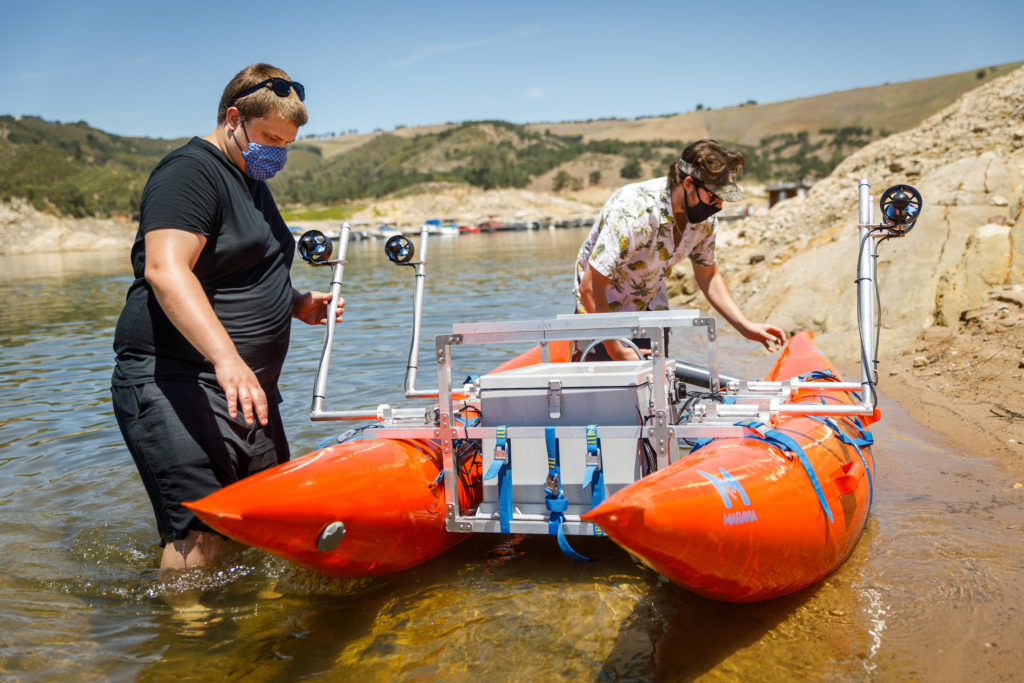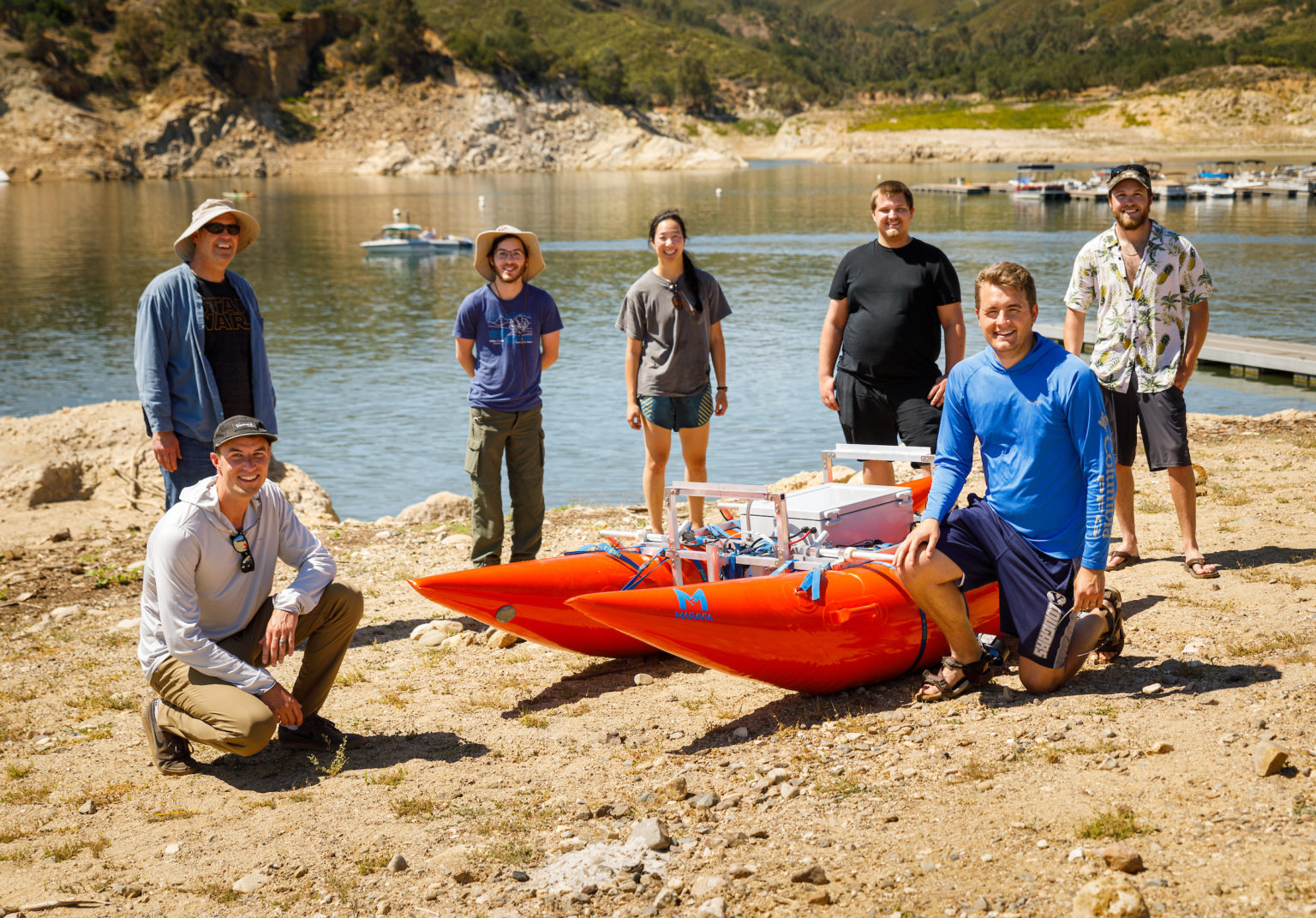Standing in knee-high water beside his team’s senior project, mechanical engineering student Jacob Davis pumps a fist in the air and lets out a celebratory cheer.
“We’re all super happy that it’s floating right now,” he says.
After nine months of research, design and manufacturing, the team’s research raft is finally on water. And, while it will do much more than float, just getting the vessel to Lake Nacimiento, located an hour’s drive north of Cal Poly, is the first major relief.
“I’ve been anxious all day today and all day yesterday,” Davis, the team’s quality lead, says later. “I had trouble getting to sleep last night. All of the math in the world can tell you something is going to work, and you just don’t know. There are just factors that you can’t anticipate or account for, and so when we got the pontoons strapped on and put it in the water, and we saw it float, that was my first (takes a deep breath) moment: It floats.”
The raft was a senior project sponsored Lawrence Livermore National Laboratory, a federal research facility, which has a fleet of 17 rafts that perform diagnostics in the ocean. The challenge for the lab, said lab engineer Paul Nyholm, is that each raft is 16-feet long and weighs 3,000 pounds.
“It’s hard to ship them in different places of the world, and it’s always a little hard to handle,” Nyholm said. “We have to get a crane to drop them in the water, and it’s a big operation that takes a lot of people.”
When Professor Peter Schuster, who has taught at Cal Poly since 2003, sought organizations to sponsor mechanical engineering senior projects, the lab suggested students create a prototype for a miniaturized raft.
“We want to make something that people can lift by hand that we could stack on top of each other to save space on the deck of a ship and make it easier to ship around the world so that we can be a little bit more agile,” Nyholm said.
Most mechanical engineering senior projects are sponsored by private companies and nonprofit organizations, Schuster said. Once students are paired with projects, the first week of class, they begin working with sponsors to create a needed product.
“By incorporating industry into this process, it makes the projects realistic,” said Schuster, who is also a senior project advisor. “And the students also get the exposure of working with real industry sponsors under deadlines, and it includes a form of mentorship, as well.”
The goal of this particular team was to create a 200-pound unmanned research raft with motors and the ability to carry at least a 10-pound payload. The raft had to be able to move forward and backward, and it had to be stackable.

Throughout the school year, the team communicated regularly with Nyholm, who mentored them during weekly virtual meetings.
“As any engineering process starts, it starts with ideation and design and really talking to our sponsors and getting to know the problem at hand and doing what we can to find solutions,” said Kahye Yu, who served as the student team’s project coordinator.
After design reviews were approved, the team went to work on manufacturing the frame and adjustable motor arms, cutting, drilling and welding. Then they tested the raft’s waterproofing and assembly before heading to Lake Nacimiento to make sure the raft would float and maneuver properly.
After the raft was proven to float, technical lead Andrew Fleming utilized the lab’s control software, which commanded the vessel to spin and thrust. Meanwhile, as Yu and design lead Luke Vickerman trailed in kayaks, the software gathered data on speed and GPS coordinates.
Watching from the shore, Nyholm said the test went “swimmingly well.”
“We’ve been really impressed with the caliber of the students as well as how smooth the process was to sponsor a project here and get an end result,” he said.
Having the sponsor attend the final test added anxiety, though much of it was relieved after Davis’s initial elation.
“The sheer thrill of that moment was awesome to see,” Schuster said.
As other boats cruised along the picturesque lake in the warm sunlight, the celebrations would continue throughout the day as the raft followed commands and gathered data.
“I’m going to tell you I’m going to take lots of photos, and I’m going to cry myself to sleep tonight for a job well done because it was awesome just seeing it all come together,” Davis said.

